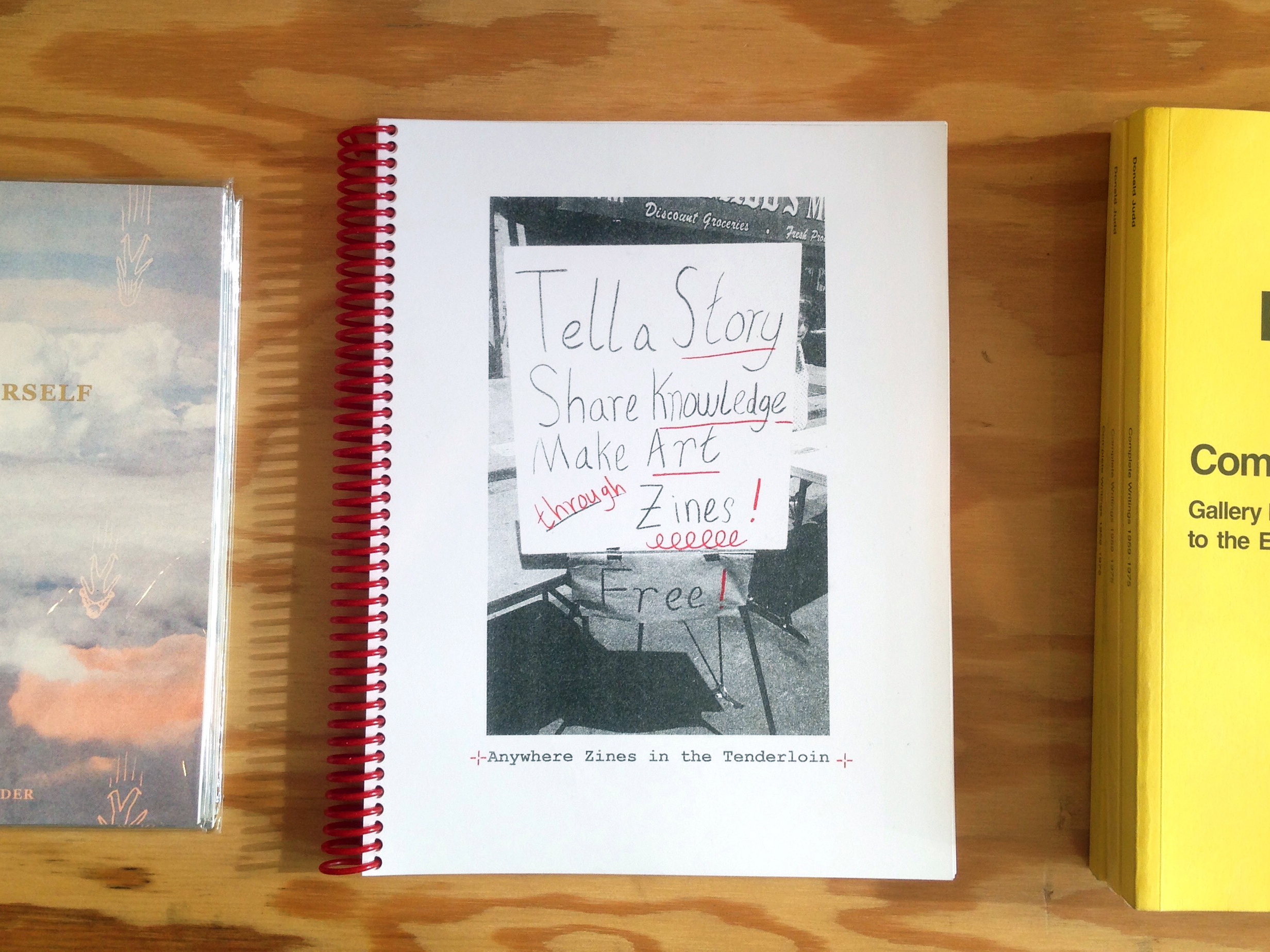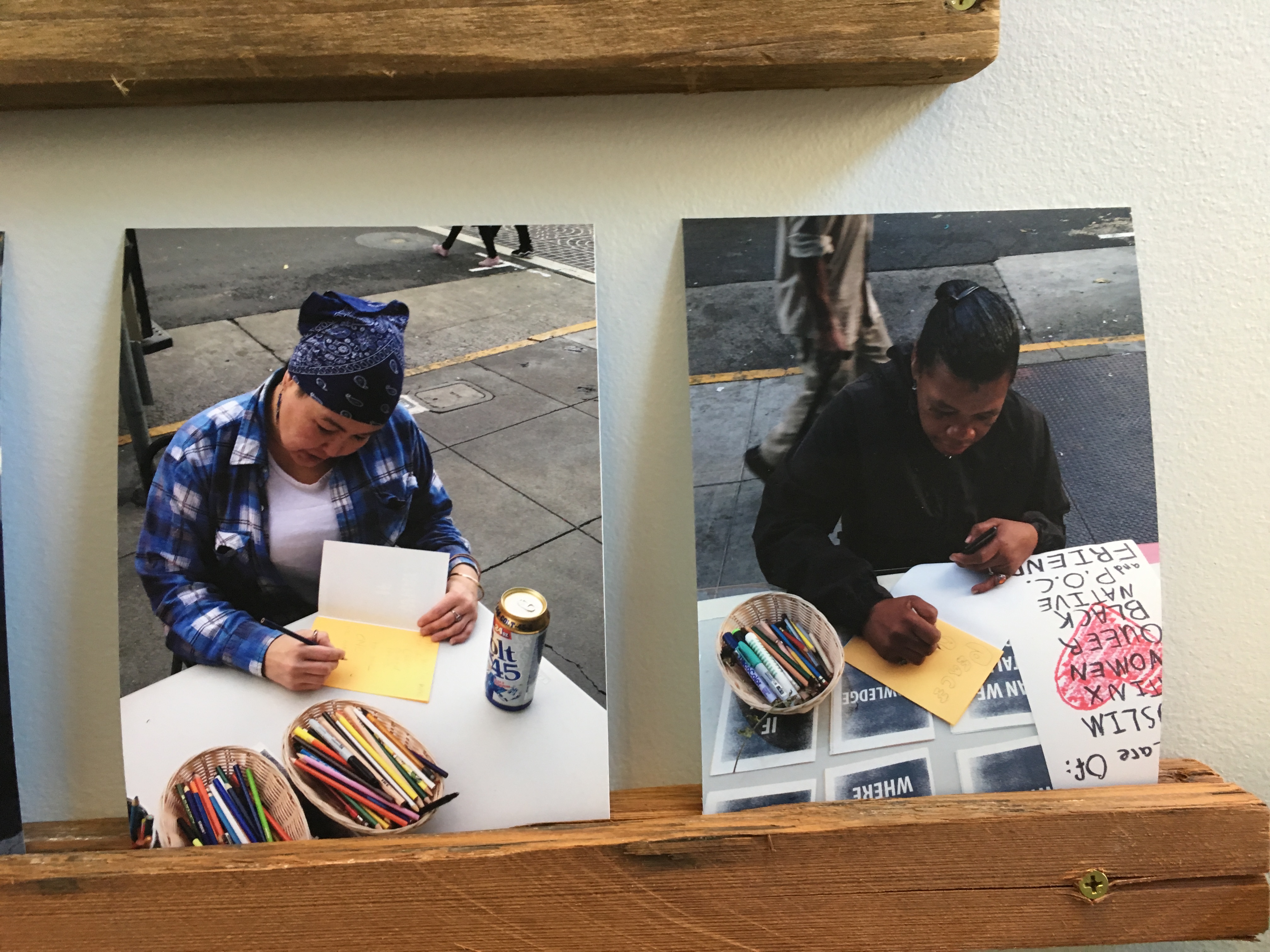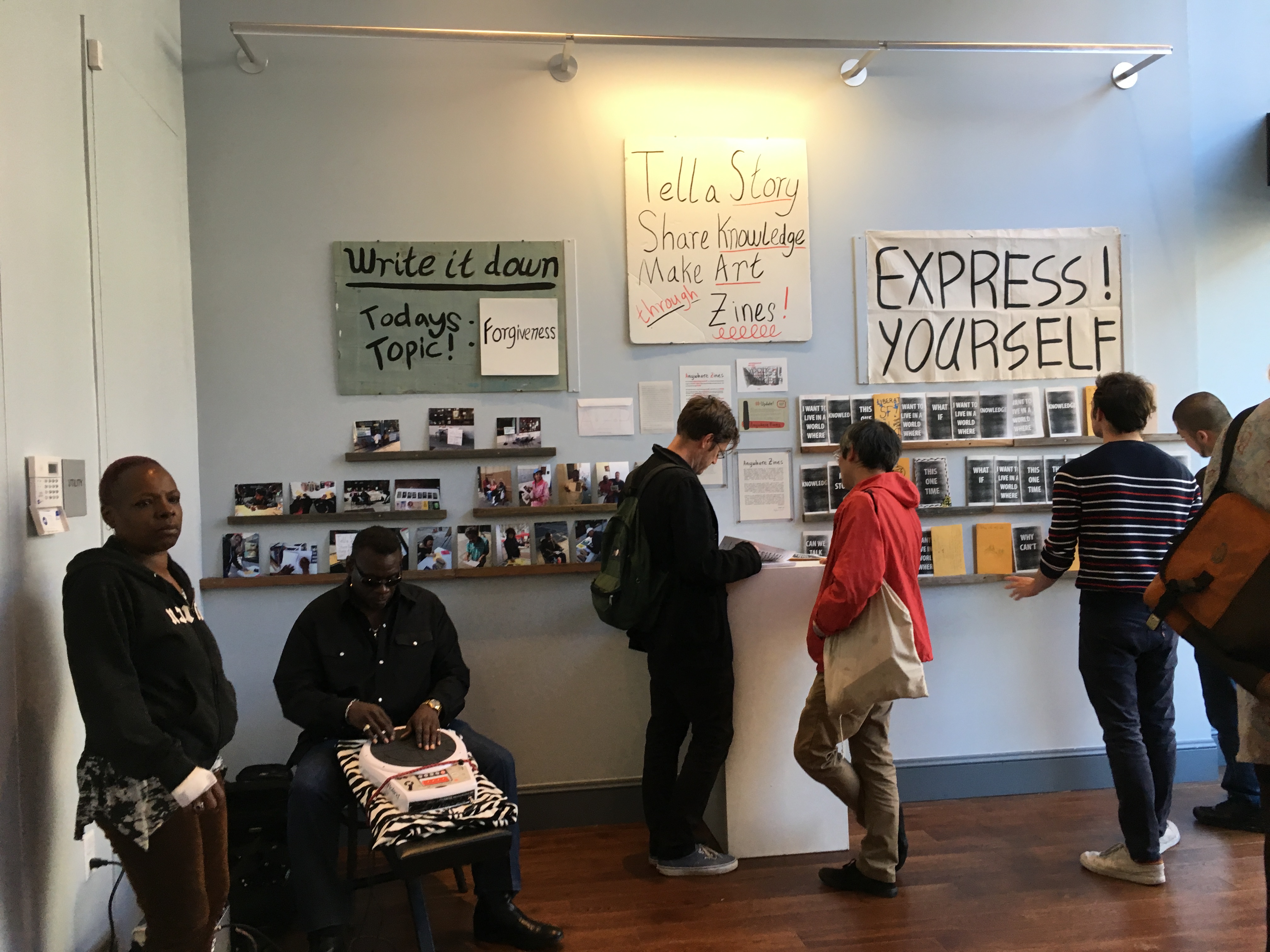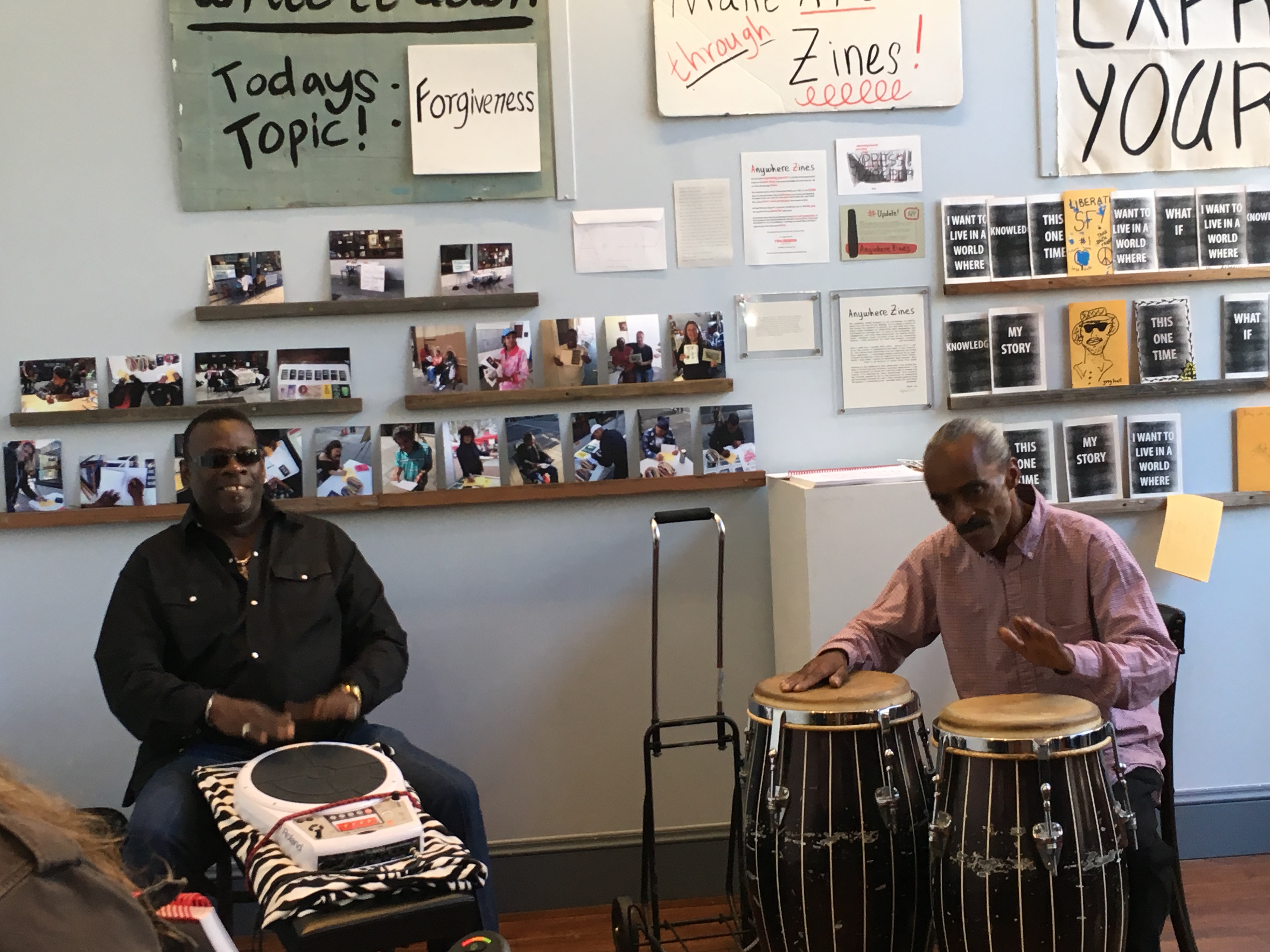‘ANYWHERE ZINES’, a project by Raphael Villet | San Francisco, California
Believing in small art magazines as a form of creative expression, sharing stories, and discovering the richness of a community, Bay Area artist Raphael Villet has involved dozens of people in doing just that, during his 9 month residency at the Tenderloin Museum in San Francisco.

'Anywhere Zines'
How do we define art? Is it anything that has something to say? Are not all creations - writing, visual and performance included - art in their own right? Do we not all have thoughts, stories, struggles, and passions to share? What has placed limitations on who can create art?
Raphael Villet, a young artist based in the Bay Area, California, created a special space for over forty-five participants. He spent a nine month residency at the Tenderloin Museum in San Francisco¹ learning, observing, and collecting the voices of that distinctive neighborhood. On a weekly basis he set up a table in the street, right outside the museum, and encouraged passersby to write or draw a zine².

When asked what inspired his project, Raphael replied, “I have so much curiosity as to what people in the Tenderloin have to say. It is a neighborhood of such beauty, volatility, brutality and magic. I set out to see the extent to which people in this neighborhood could be provoked into sharing their story through zines. When this project began, I really had no idea what was going to happen! I have never done anything like this before, and so it was difficult to gauge who would receive me and how they would react. That being said, I was open to experimenting with different techniques of engagement, such as making and posting various signs, posting ‘themes of the day’, displaying different art materials, and finding ways to engage people passing by.”

The project idea stemmed from Raphael’s work at Play Press, a publishing house he runs that focuses on artist books and zines. He says, “I am carried by a wondrous enthusiasm and love for zines. They are an accessible and deeply personal medium for autonomous self expression and discovery, and I believe in their potential for uniting and illuminating underrepresented voices...I came in to the project with a desire to share and propagate the tremendous possibilities of zines.”
Templates for newcomers included a few words of inspiration on a cover page, such as “Knowledge,” “I Live in a World Where...” or “If Only...” followed by several blank pages for the participant to fill out. Some began their creations with an entirely blank booklet. Participants were confronted with markers, a booklet of paper and the day’s suggestion word. Often he posted a different word such as “Women”, or “Trump”, to inspire thought. The culmination of the project was presented at the Tenderloin Museum on June 1st, 2017.

“Anywhere Zines provokes in that it confronts the notion and place of self expression. When I encourage people to stop and write something down, I am in a sense, asking them: ‘why wouldn’t you?’ I place value in the act of stopping, resting, and expressing introspection. I place value in zines. It is a dangerous game to play, as it skirts the edge of confrontation, of judgement, of questioning, and of assigning value. Provocation in a neighborhood partly made up of people who are working hard to stay sober, rise above poverty, deal with mental illness and escape brutality is problematic. However, provocation is unavoidably the starting point for ‘Anywhere Zines’ to engage the public in making art. I have come to see and feel a difference between passive and active provocation.”

At first, Raphael was convincing and coaxing participants, but soon realized that “relying on the energy of your passion to gain attention leads to a certain kind of dissonance” (181). Additionally, this methodology focused his efforts away from the project itself, so he changed his approach. Eventually, what started as an “aggressively anti-internet” education of what zines have to offer became a creative space for self-expression.
Raphael noticed that the presentation of art materials by a young, white male to a vastly different demographic did not help the Tenderloin inhabitants let down their guard. Raphael’s mission became to honestly represent a relatable common person within the diverse neighborhood. He was not the teacher, the judge, or the rule-maker; he was the facilitator.

“The transition to ‘Express Yourself’ embraces passive facilitation. I [Raphael] simply become available if people are interested in what I have going on.” Raphael did not want to be a critic. He wanted to push back against inclinations for approval and assert that it was not his art to create. The creation was borne of the participants’ existing and unique voices.
He explains further in his reflection: “Beyond the semantics of what to say, just having an awareness of the tendency of people to seek permission for their creative output can be really healing for the interaction. Art practice carries the beautiful potential for people to embrace the idea that introspection, expressions and creative output don’t require permission, comparison or judgment. It’s okay just to show up and create. It’s okay to just be yourself. This is unorthodox both inside and out of the art world and I continue to realize the importance of asserting this mindset into my social practice”.

The participants ranged from children to seniors, each voice validated in the same vein. Stories range from beautiful inspirational messages to emotional political reactions and detailed personal accounts. Five copies of each zine we returned to the participants and then photocopies were published in the artist’s compilation book. The art was tangible and its message reproducible.
Many of the accounts are relatable. Topics speak to race, gender, and age inequality. There are zines of love and the dramatic opposite of hatred, faith and folly. One participant wrote, “I want to save the world but I don’t think I’m good enough and I’m afraid.” Another expressed peace, sharing, and hope: “Love together or perish alone”.

The Tenderloin district is filled with art, music, and culture that is waiting to inspire. Raphael sees “art as an activity that should be available to everyone; understanding well the privilege I carry to even assign myself the title of artist.” The opening gallery event showcased dance and musical performances by Tenderloin residents. Raphael, himself, accompanied a Tenderloin vocalist on the guitar.
Raphael’s empowering undertaking opened his mind and art to new perspectives, as well as the wider audience of the art world to a culture it may have otherwise overlooked. The art created in this project was not merely the output, the physical zines themselves, but the knowledge gained through the interactions.
NOTES:
¹ The Tenderloin is a low-income neighborhood spanning fifty blocks located centrally in downtown San Francisco. It is notorious for poor living conditions, overcrowded apartments, the presence of homeless as well as mentally ill people and drug addicts.
² Zines, abbreviation for magazines, are self-made books. They are whatever you want to put in between the pages of your own small zine. You control what it looks like, what it feels like, and you don’t need permission from anyone to do it.
* Quotations and excerpts are from a personal interview with Raphael Villet and his compilation book, ‘Anywhere Zines in the Tenderloin’.